Da Nang to Hoi An Distance: How Far Is It?
The distance from Da Nang to Hoi An is about 30 km. Although it does not sound very far, there is a way for almost every taste and preference of traveling.For information:- By car or by taxi: It will normally take 45 minutes to 1 hour depending on traffic and weather conditions.
- By motorbike: About 50 minutes.
- By bus: 1 to 1.5 hours, depending on the stops.
- Cycling: About 2 to 3 hours, which is more experiential as you would pass through charming countryside landscapes.
The Best Ways to Travel from Da Nang to Hoi An
There are several ways to travel from Da Nang to Hoi An, each with its unique advantages.By Taxi or Private Car from Da Nang to Hoi An
It is the most comfortable and convenient way: taking a taxi or private car. Several taxi services operate from Da Nang to Hoi An, whose prices vary from 300,000 to 500,000 VND ($13-$22 USD). Private car services are also available at your hotel or through any travel agency, which may offer more luxurious and comfortable cars.Benefits:- Flexibility to stop and explore scenic spots along the way.
- Ideal for families or groups seeking convenience.
By Shuttle Bus or Local Bus from Da Nang to Hoi An
If you’re on a budget, shuttle buses and local buses are available. The local bus (Bus #1) from Da Nang’s bus station to Hoi An is the most affordable option, with a fare of around 30,000 VND ($1.30 USD). Shuttle buses usually cost more, typically ranging from 100,000–150,000 VND ($4.50–$6.50 USD).Key Points:- It takes slightly longer due to multiple stops.
- Best for solo travelers or those on a budget.
By Motorbike from Da Nang to Hoi An
Renting a motorbike is also one of the most popular options for tourists, but preferably for more adventurous tourists. The ride allows flexibility and a bit of adventure, with many scenic routes to explore. The cost of rentals in Da Nang varies between 100,000 to 200,000 VND ($4–$9 USD) per day.Things to consider:- Safety equipment is compulsory and cycling in Vietnam is a dangerous activity for those not familiar with local traffic.
- You will need a valid driver’s license and, preferably, travel insurance that covers you for motorbike use.
Cycling from Da Nang to Hoi An
For the fitness-minded individual or those wanting a more sedate pace, cycling is an excellent option. A number of hotels have bikes on offer, while the topography is delightfully flat, which in itself promises a delightful ride. This mode of transport will get you near villages and rice paddies for breathtaking glimpses of the beautiful central Vietnamese countryside.Things to See Along the Da Nang to Hoi An Route
Although Da Nang is only about 30 kilometers from Hoi An, there are many interesting stops you can make en route. These shall give you glimpses of Vietnamese culture, history, and nature, therefore enriching the journey to great heights. Here are the best places you can see:Marble Mountains (Ngu Hanh Son)
Lying just 10 kilometers south of Da Nang, the Marble Mountains are a must-see along your route to Hoi An. This group of five limestone and marble hills was named for the five elements: Kim (metal), Moc (wood), Thuy (water), Hoa (fire), and Tho (earth). Each mountain houses caves, tunnels, and temples, thus making up a peculiar combination of spirituality and history.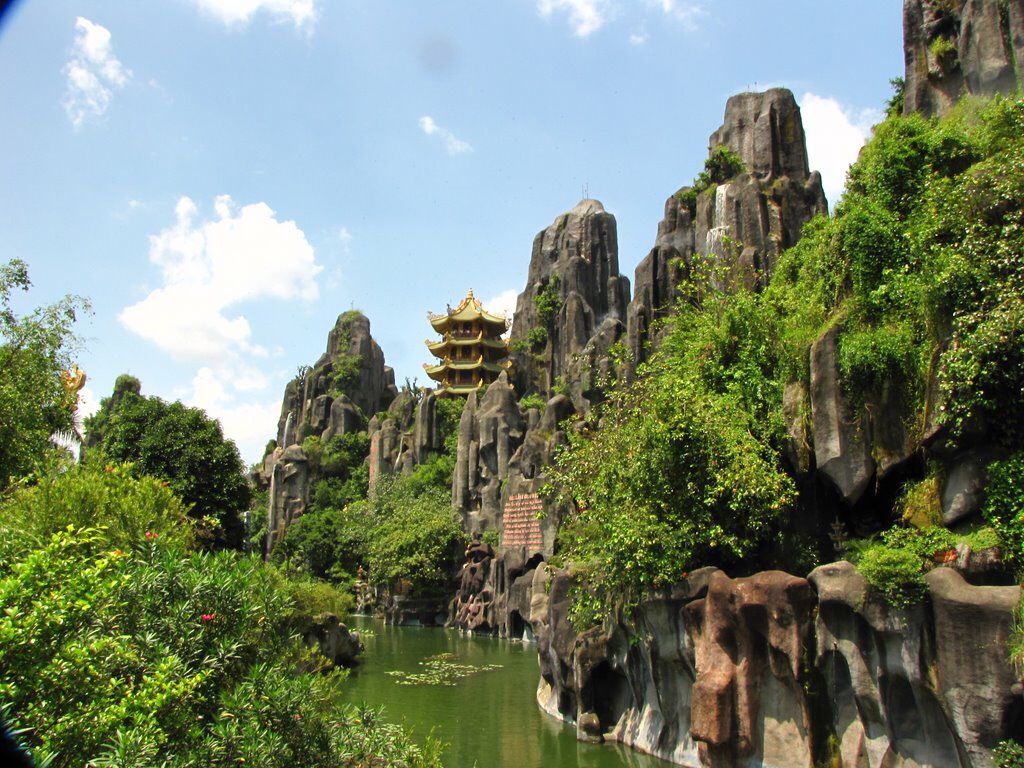
Marble Mountains (Ngu Hanh Son)
Thuy Son Mountain is the biggest and most popular, and it’s also the most developed in terms of tourist facilities. You can hike up to the top – or take an elevator – for great panoramic views of Da Nang and the coastline and lush surroundings.Inside the caves, you can also find some ancient Buddhist sanctuaries, one of which is the Huyen Khong Cave, where the natural light streams through ceiling holes to create a quite mystical atmosphere. Statues of Buddha and local deities sit inside the caverns to give the visitor a glimpse of spiritual heritage. On Thuy Son, another historic highlight greets you: Tam Thai Pagoda. The pagoda, built at the turn of the 19th century, became an important center of religion locally. Besides being an attraction unto itself, it boasts beautiful architecture set amidst tranquil surroundings.History, religion, or simply the grandeur of breathtaking views Marble Mountains offer something different.Travel Tips: You should give yourself at least 1–2 hours to be able to see the Marble Mountains properly. Comfortable shoes are advised as you will do quite a lot of climbing. And don’t forget to bring water along, especially during the hot season.Non Nuoc Beach (My Khe Beach Extension)
Just a few minutes of driving away from the Marble Mountains, Non Nuoc Beach stands proud as one of the most beautiful secret beaches in Vietnam. It stretches along the coast for 5 kilometers, with its fine white sands and crystal clear blue waters that are never rough enough to wave.
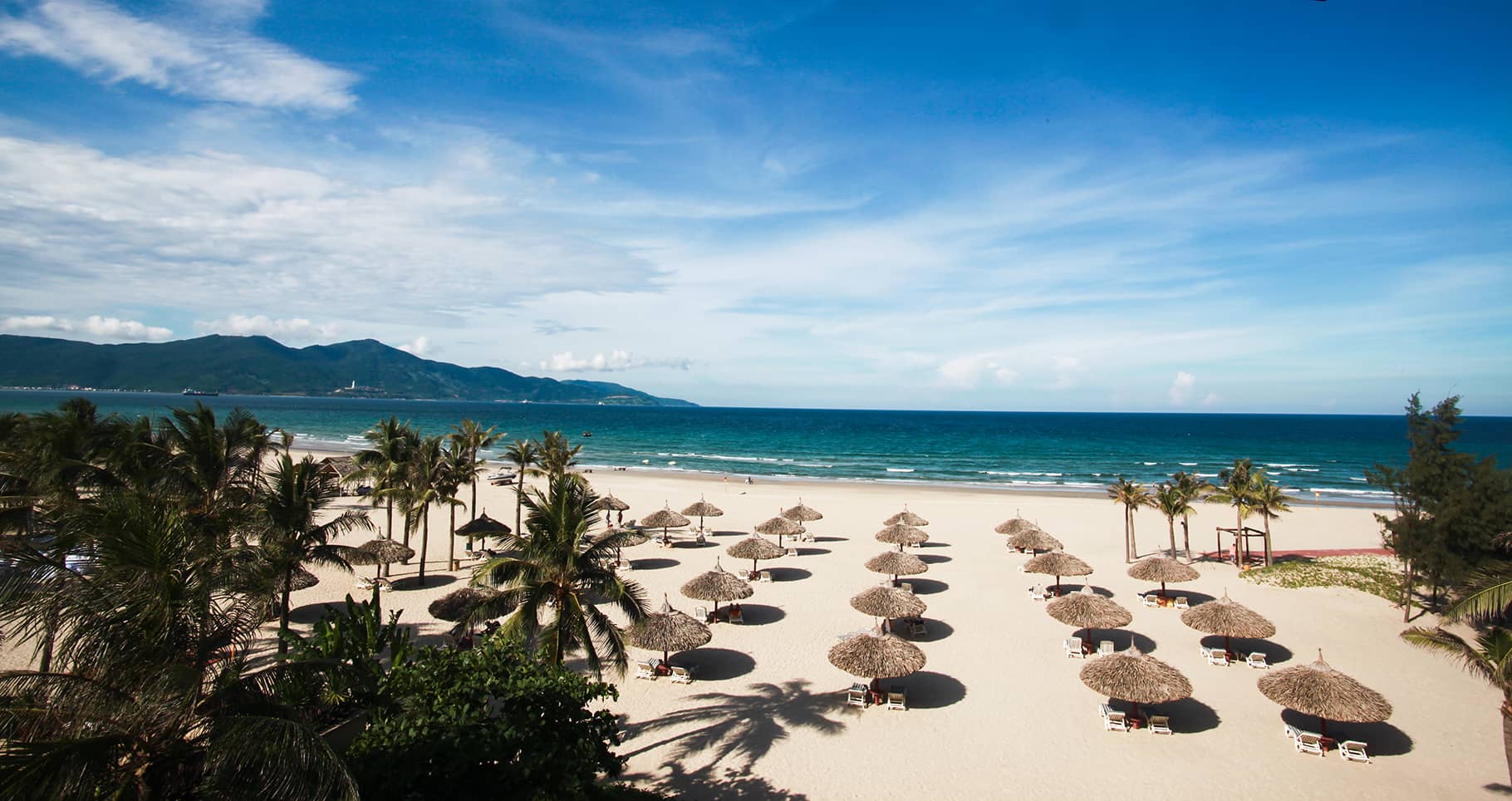
Non Nuoc Beach (My Khe Beach Extension)
Unlike the busier My Khe Beach, Non Nuoc is most often much quieter with fewer people and thus a better place for relaxation. The water is shallow and quiet, and thus it is perfect for both swimming and wading and is ideal for families with kids. The beach offers surfing activities, stand-up paddleboarding activities, and many rental shops and schools that exist around. One can also just rent a sunbed, sit under an umbrella, and enjoy the serenity.
Not far from here, Non Nuoc Stone Carving Village has local artisans creating intricate sculptures from marble quarried from the mountains nearby. This is a good place to catch a glimpse of traditional craftsmanship and perhaps pick up a couple of unique souvenirs. Non Nuoc Beach is the perfect place to stop and take a refreshing swim, do some sunbathing, or stroll leisurely along the shoreline.
Travel Tips: Bring in your towel and some sunscreen to relax on the beach. Book water sports if interested. However, prices and availability of the services during the high tourist seasons need to be ascertained well in advance from local vendors.
Tra Que Vegetable Village
Tra Que Vegetable Village is about 3 km from Hoi An. It is a quiet stop that allows one to peek into rural Vietnamese life. This charming village is noted for organic farming and is well-known for raising many aromatic herbs and vegetables used widely in the local cuisine.
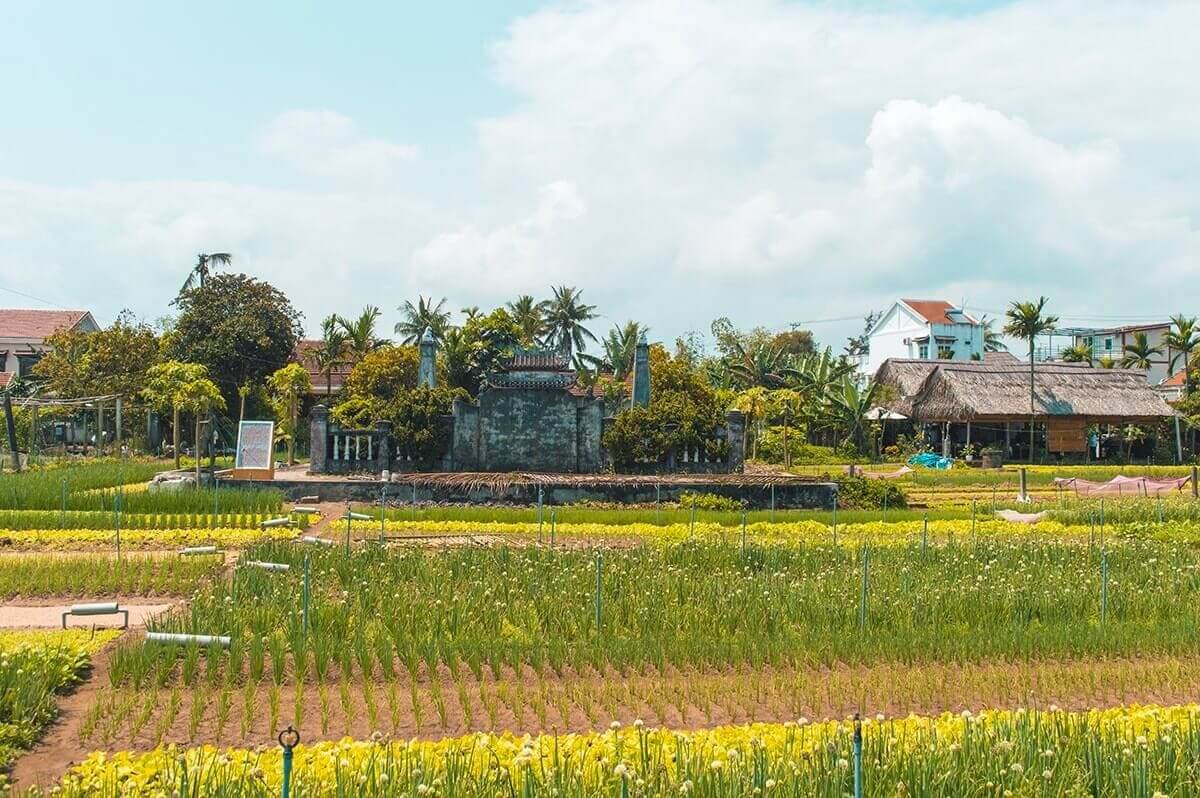
Tra Que Vegetable Village
The village is well-known for traditional farming techniques, also using the seaweed from the nearby Co Co River as organic fertilizer. You will see-and perhaps participate in the farming activities of preparing the land, planting the crops, and their harvest. For many visitors, their experience of Tra Que begins with a cooking class, which generally starts with a tour of the village. You’ll pick fresh vegetables directly from the farm and then learn to prepare some of the most favorite Vietnamese dishes, which are Pho, Spring Rolls, or a local specialty like Cao Lau.
This may be followed by relaxation and wellness offered by some tours: a traditional herbal foot bath after exploring the farm, with its ingredients grown in the village. This is a great way to finish your tour before you continue on to Hoi An. Walking through the village is a chance to see local life up close: friendly farmers, beautifully tended gardens, and scenic rice paddies and waterways give an insider’s glimpse of Vietnam’s extensive agricultural past. Tra Que Village is more than sightseeing; it’s participating in the land and people of Vietnam.
Travel Tips: Classes on cooking and farm tours are best booked in advance through a good tour company. Most cooking classes take half of the day and include transportation from your hotel in Da Nang to Hoi An.
Other Stops to Consider Along the Da Nang to Hoi An Route
Son Tra Peninsula
If you have more time, take a detour to the Son Tra Peninsula, which is just a short drive from Da Nang. It hosts the Linh Ung Pagoda, housing a 67-meter Lady Buddha – the tallest in Vietnam. In addition, it offers panoramic views of the coastline around Da Nang. The peninsula also provides a sanctuary for some wildlife, including the red-shanked douc langur, a native monkey species from the area.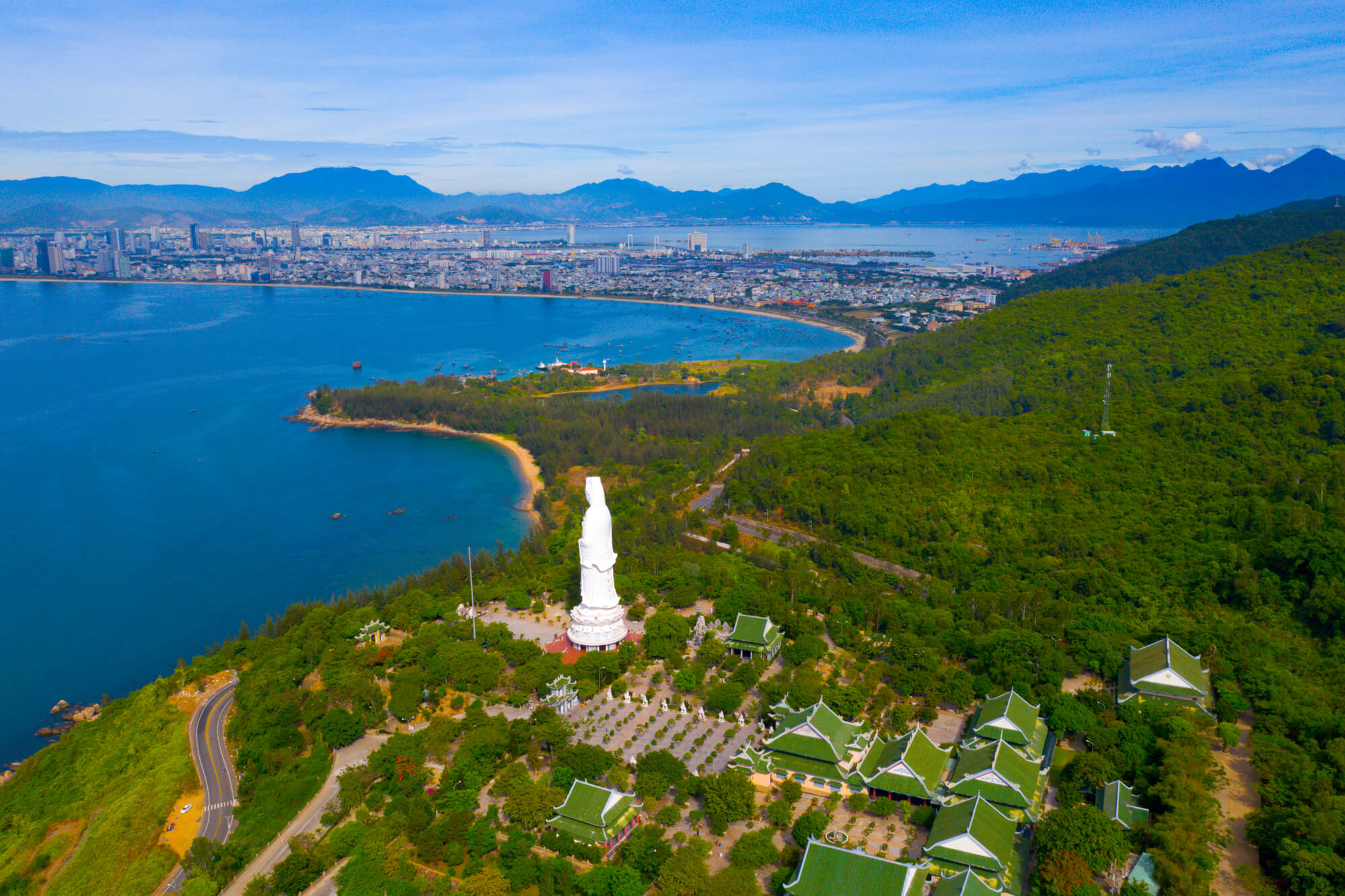
Son Tra Peninsula
Hoi An Ancient Town
Of course, your final destination is Hoi An Ancient Town, which is truly a treasure trove of historical architecture combined with vibrant culture. Once there, make sure to walk through its well-preserved streets lined with Chinese temples, French colonial buildings, and Japanese merchant houses. This town is especially magical at night because the light of traditional lanterns brightens up the streets, thus creating an unforgettable atmosphere.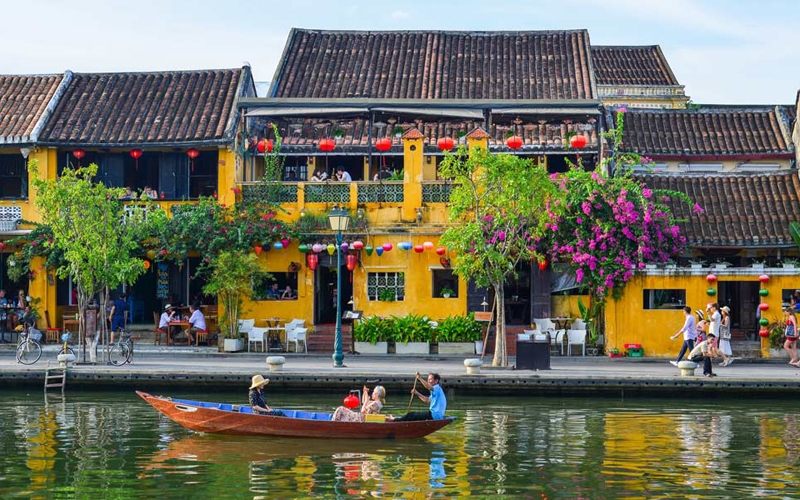
Hoi An Ancient Town
Conclusion
The trip from Da Nang to Hoi An may be short in distance, but it’s filled with rich cultural experiences and breathtaking sights. These range from entering the surreal caves of Marble Mountains to feeling the sun-kissed beaches of Non Nuoc Beach and the more traditional farming ways at Tra Que Vegetable Village. The transfer between these two cities is more than just a journey across the two cities. It’s a scenic adventure that brings out Central Vietnam’s true beauty.
Want to see it for yourself? Plan your trip today and make sure these incredible stops are included. By car, motorbike, or bicycle, this trip from Da Nang to Hoi An is as stunning as the destination itself.
